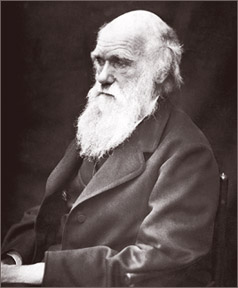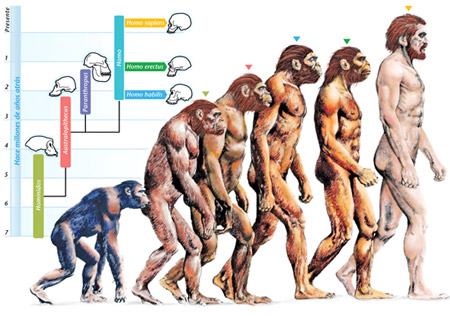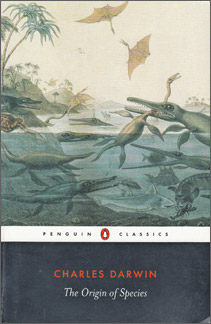|
Charles Darwin's 203rd birth anniversary:
The scientist who changed the world
By Pramod DE SILVA
|

Charles Darwin
|
The name Charles Darwin is synonymous with the Theory of Evolution.
Before Darwin proposed that life forms gradually evolved on the Earth,
there was a general belief that all life had been ‘created’ by God or a
similar higher power. Darwin literally turned the world upside down with
his then controversial (it still is in some quarters) theory On The
Origin of Species, the very title of his explosive treatise on life
published in 1859.
On February 12, 2012, the world celebrates Darwin Day, in honour of
the man who changed our view of life forever. The day commemorates
Charles Robert Darwin’s birth anniversary (he was born on February 12,
1809).
Although more than 200 years have passed since his birth, his
theories and ideas still resonate in the scientific and religious
worlds, giving rise to a vigorous debate. Today, Darwin Day has also
become an avenue to appreciate the advancement of human knowledge and
the achievements of science and reason.
|

A depiction of the Theory of Evolution |
Darwin is among the most famous scientists who effected a fundamental
shift in the way we think about our world. Ranked on par with Isaac
Newton and Albert Einstein, Darwin made a discovery that changed our
perception of the world around us. But for Darwin, it was not a flash of
inspiration – it took years of careful observation of animal and plant
species in their wild habitats to arrive at his conclusions.
Journey of discovery
The story of his journey of discovery begins on August 27, 1831. A
young Darwin was on board the H.M.S. Beagle, as a naturalist. It was a
complete circumnavigation of the Earth that took five years. Although
Darwin was principally assigned the task of undertaking geological
surveys, that did not diminish his curiosity for observing the natural
world at work.
Darwin spent most of this time exploring on land: three years and
three months on land, 18 months at sea. He explored varied landscapes
from Azores to Galapagos to Falkland Islands during a journey that
started from England and covered four continents including Australia. By
the end of the journey, he had made a name as a naturalist, geologist
and fossil collector.
The publication of the account of his journey – the Voyage of the
Beagle – cemented his reputation. Incidentally, both his major works
(Beagle and Origin of Species) have never been out of print.
Naturalist
This was the journey that planted the seed of evolution in his mind.
“When on board H.M.S. ‘Beagle,’ as a naturalist, I was much struck with
certain facts in the distribution of the inhabitants of South America,
and in the geological relations of the present to the past inhabitants
of that continent. These facts seemed to me to throw some light on the
origin of species - that mystery of mysteries, as it has been called by
one of our greatest philosophers,” he wrote later.
Puzzled by the geographical distribution of wildlife and fossils he
collected on the voyage, Darwin began detailed investigations and in
1838 conceived his theory of natural selection. Having observed the
sheer diversity of life in all the continents, he came to the inevitable
conclusion that life has evolved through the process of natural
selection. Although he discussed his ideas with several naturalists, he
needed time for extensive research. He was writing his theory in 1858
when Alfred Russel Wallace sent him an essay which described the same
idea, prompting him to make a joint announcement of the momentous
discovery.
One long argument

|

A model of the HMS Beagle |
His book On The Orgin of Species (full title: On the Origin of
Species by Means of Natural Selection, or the Preservation of Favoured
Races in the Struggle for Life) proved unexpectedly popular, with the
entire stock of 1,250 copies sold when it went on sale on November 22,
1859. In the book, Darwin set out “one long argument” of detailed
observations, inferences and consideration of anticipated objections.
His theory is simply stated in the introduction: “As many more
individuals of each species are born than can possibly survive; and as,
consequently, there is a frequently recurring struggle for existence, it
follows that any being, if it vary, however, slightly in any manner
profitable to itself, under the complex and sometimes varying conditions
of life, will have a better chance of surviving, and thus be naturally
selected. From the strong principle of inheritance, any selected variety
will tend to propagate its new and modified form.”
This idea was later shortened to, and reflected in, the simple term
“survival of the fittest”. In other words, weaker organisms may not
survive if they cannot compete with the stronger ones. That is literally
a fact of life for most animals and plants.
Popularity
Although Darwin himself did not use the word evolution until the
sixth edition of his book was published, the word had gained popularity
even earlier. Today, we have a clearer idea of how life evolved on
Earth.
Complex life is a fairly recent phenomenon. The Earth is 4.6 billion
years and the oldest organisms appeared around 3.8 billion years ago.
According to the theory of evolution, it is from these simple organisms
that all life on Earth ultimately derived.
The first multi-cellular organisms appeared only a billion years ago.
Simple animals appeared around 600 million years ago. Mammals, perhaps
the most successful group of species on Earth, are less than 200 million
years. Dinosaurs went extinct around 65 million years ago. Humans, in
the form of the genus Homo, came on the scene just 2.5 million years
ago.
Although Darwin did not specifically mention the evolution of humans
in his Origin of Species, just stating that “light will be thrown on the
origin of man and his history”, he later wrote a separate book on the
subject titled The Descent of Man. Although Darwin himself never
popularised the idea of Man being descended from primates or apes per
se, the idea quickly caught on, to the extent of newspaper cartoonists
depicting (a bearded) Darwin as an ape.
Major discovery
One of the strongest factors in favour of evolution is the discovery
of a large number of fossils of animals that lived millions of years
ago. This shows that there has been a process of life on the planet.
Another factor is the variation of species in the same family, a
phenomenon described and catalogued by Darwin.
In one instance, he wrote: “These birds so closely allied to the
Thenca of Chili is singular from existing as varieties or distinct
species in the different islands - I have four specimens from as many
islands - These will be found to be two or three varieties. - Each
variety is constant in its own island.”
On the other hand, detractors say that “intelligent design” a.k.a
creation, is the only way that complex organisms such as humans could
have arisen. There is another question – if life sprang from amino acids
and other ingredients in a ‘primordial soup’, does life exist on other
planets which have similar conditions? Could life be unique to Earth or
could life, even intelligent life, be commonplace in the vast universe?
The debate about creation and evolution will rage on at least until
these questions are answered.
Resurgence of interest
Following the 200th anniversary of Darwin’s birth, there is a
resurgence of interest in his theories. Scientists including Richard
Dawkins have staunchly defended the Theory of Evolution while debunking
creationism. Despite opposition from certain religious and political
groups, many schools in Western countries now teach about evolution.
Darwin left a legacy that only a few other scientists could match,
even in the future. The Earth is constantly changing and so are its
inhabitants. Evolution does not stand still, as Darwin pointed out. New
species of flora and fauna are being discovered every day. With each new
discovery, we can learn more about evolution itself. What will the
species left on Earth look like in a million years? Only time - and
evolution - will tell. |

